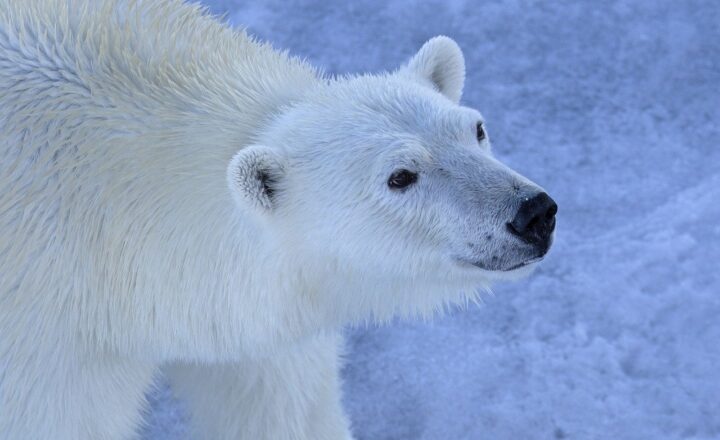The Formation of Sand Dunes: How Wind Shapes Deserts
November 16, 2024

Sand dunes are one of nature’s most fascinating landforms, sculpted by the powerful forces of wind. These dynamic structures emerge in a variety of landscapes, from arid deserts to coastal regions. This article dives deep into the formation of sand dunes, the different types, and the role that wind plays in shaping these beautiful and ever-changing formations.
1. Understanding Sand Dunes
Sand dunes are hills of sand piled up by wind action. Most commonly found in desert environments or along beaches, they can vary significantly in size, shape, and location. What makes sand dunes particularly interesting is that they are not static; they are constantly moving and morphing, creating a unique landscape that can change dramatically from one day to the next.
1.1. The Role of Sediment
For sand dunes to form, there needs to be an adequate supply of fine sand or sediment. The types of sediments typically found at sand dunes include:
- Quartz Sand: Derived primarily from weathered rocks, quartz sand is the most common type of sand found in dunes. It is resistant to weathering and erosion, making it ideal for dune formation.
- Granular Sediments: Consist of a combination of various minerals that, when eroded, can add to the availability of sediment for dune formation.
Understanding the source of the sand helps us appreciate the geographical contexts that give rise to sand dunes.
2. How Wind Moves Sand
Wind is the driving force behind the formation and movement of sand dunes. The process of sand movement involves a few key mechanisms:
2.1. The Process of Saltation
Saltation is the process by which sand grains are lifted off the ground by the wind and then fall back. This action propels some grains in jumps along the surface, often leading to the gradual accumulation of sand in certain areas. Here’s how it works:
- As wind velocity increases, it creates turbulence close to the ground, lifting fine sand particles into the air.
- These lifted particles will collide with other sand grains, causing some to bounce and leap into the air, continuing the cycle.
- Sand grains eventually fall back to the ground, usually about one meter away from where they were lifted, allowing for the gradual buildup of sand in a particular area.
This saltation process contributes to the shifting landscape of sand dunes.
2.2. Wind Direction and Sand Dune Shape
The direction and speed of wind play crucial roles in determining not only where dunes form but their shape as well. The most common dune shapes include:
- Barchan Dunes: Crescent-shaped dunes that form in areas with a unidirectional wind flow, characterized by their points facing downwind.
- Transverse Dunes: Formed at right angles to the wind direction, these dunes create a series of ridges and valleys often seen in large dune fields.
- Linear Dunes: Long, straight dunes that form parallel to the prevailing wind direction, often appearing in groups.
- Star Dunes: These have multiple arms radiating from a central peak and are formed by winds blowing from multiple directions.
The unique shapes of sand dunes contribute to the diverse ecosystems they often support.
3. The Ecosystem of Sand Dunes
While sand dunes may seem barren at first glance, they are thriving ecosystems. Various plants and animals have adapted to survive in these environments.
3.1. Flora
Plants such as lichen, grasses, and shrubs have developed unique adaptations to grow in sandy, nutrient-poor soils. These adaptations include:
- Deep Root Systems: Many dune plants have deep or spreading root systems to stabilize the sand and access water sources.
- Salt Tolerance: Certain plants can tolerate saline conditions, crucial for dune ecosystems often affected by coastal salt spray.
Together, these plants help to stabilize the dunes, preventing erosion and fostering biodiversity.
3.2. Fauna
The fauna that inhabit sand dunes are equally remarkable, adapting to the unique challenges posed by such harsh environments. Sand dune animals include:
- Invertebrates: Various insects and arachnids play critical roles in the ecosystem by aerating the soil and serving as food for larger animals.
- Reptiles: Many reptiles, such as horned lizards, thrive in sandy habitats and frequently burrow to escape the heat, while also helping maintain the balance of pest species.
- Birds: Several bird species nest in dune areas, relying on the unique landscape for safety and food sources, including shorebirds that feed on marine life along coastal dunes.
The interplay between flora, fauna, and the shifting sands illustrates the complexity of these ecosystems.
4. The Impact of Climate Change on Sand Dunes
Like many natural landscapes, sand dunes are also affected by climate change. Changes in weather patterns can lead to altered sand supply, wind patterns, and vegetation growth, all of which impact dune formation and stability.
4.1. Increased Erosion
Intense weather events and changing wind patterns can lead to increased erosion, which may reshape or completely destroy existing dunes.
4.2. Habitat Disruption
As climate conditions shift, many of the plants and animals that depend on these ecosystems may struggle to survive, leading to shifts in species composition and potentially significant biodiversity loss.
It’s critical that we engage in efforts to monitor and protect these vital ecosystems as they continue to change.
5. Conclusion
The study of sand dunes provides exciting insights into the power of wind and the complexities of desert ecosystems. Understanding how wind shapes these majestic structures enhances our appreciation for the delicate balance of nature and underscores the importance of conservation efforts. As we face significant environmental challenges, including climate change, protecting the unique habitats of sand dunes becomes ever more critical.
Discovering the intricate relationship between wind, sand, and life in these arid environments enriches our understanding of the planet’s diverse landscapes, encouraging curiosity and stewardship for future generations.







